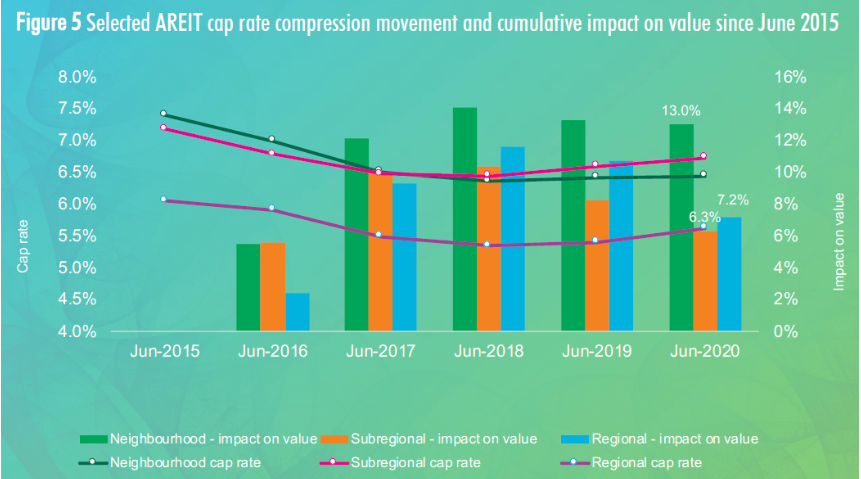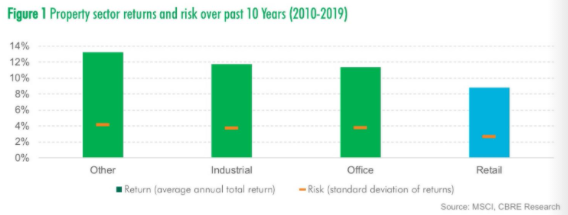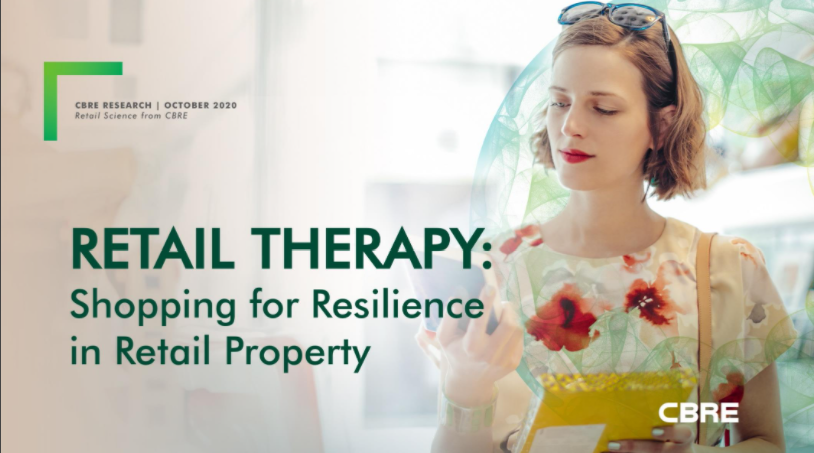Retailers encouraged to take 'practical' measures to remain relevant - CBRE report
Contact
Retailers encouraged to take 'practical' measures to remain relevant - CBRE report
Last mile retailing, showroom style shopping, click and collect, customer analytics technology, food delivery offerings and flexible leases are set to become the hallmarks of resilient retail assets, according to new research from CBRE.
Online retailing and the growth of e-commerce is fuelling an overall net increase in commercial property space, giving landlords the opportunity to capitalise on increased demand for industrial space, new research has found.
CBRE Research’s new report, Retail Therapy – Shopping for Resilience in Retail Property, provides an overview of retailers that are expected to experience growth in floorspace requirements, the potential uplift to MAT (Moving Annual Total) by incorporating mixed-use development in traditional retail assets and what practical measures landlords can implement to ensure they remain relevant to changing consumer needs.
CBRE’s Regional Director of Retail Services, Meagan Wakefield, said that as retailers in larger centres reduced department store and large-specialty store floor space - conserving costs and catering for increasing e-commerce demand - there was an opportunity for centre owners to reinforce the original retail recipe with the introduction of mixed-use offerings.
Retail Therapy – Shopping for Resilience in Retail Property CBRE report - At a glance:
- Last-mile retailing, showroom style shopping, click and collect, customer analytics technology, food delivery offerings and flexible leases are set to become the hallmarks of resilient retail assets.
- Incorporating mixed-use into a precinct can help drive spending with office and education offerings providing the greatest increase in centre MAT growth.
- Creating attached e-commerce-driven distribution centres will be of benefit.
“Incorporating mixed-use into a precinct can help drive spending with office and education offerings providing the greatest increase in centre MAT growth,” she said.
According to the report, a 10,000sqm office space could provide an additional $3 million per annum in centre MAT, while a 10,000sqm education facility could see an additional $2.2 million per annum in MAT.
Ms Wakefield added that a strategic floorplate reconfiguration, converting underutilised retail space into an attached e-commerce-driven distribution centre could benefit not just the store in reducing its footprint, but other stores in the centre.
"Our analysis shows that discount department stores in centres that had a catchment with a higher population density, younger population and higher average household income were more resilient and less likely to close as part of network optimisation projects," she said.
The report notes that neighbourhood shopping centres have experienced the highest cap rate compression at 96bps since 2015, generating 13 per cent capital value growth, and outperforming sub-regional (45bps compression and 6.3 per cent growth) and regional shopping centres (43bps and 7.2 per cent growth).

The research also reveals that the re-pricing of retail assets, relative to other sectors, means that future total returns for the retail sector should be higher than for other lower yielding property sectors, such as office and industrial.
Kate Bailey, Head of Retail Research at CBRE and report author, said smaller neighbourhood shopping centres had proved more resilient in terms of capital value preservation than their regional and sub-regional counterparts.
“Our view is that the widening retail yield spread, relative to office and industrial, will be exacerbated by the COIVID-19 pandemic’s impact on retail trade,” he said.

“COVID-19 has also driven the increase in online retail penetration sharply to an estimated 13.3 per cent, a number originally not expected to be reached until 2024, and we’re now expecting to see department store selling space decrease to 2.6 per cent annually by the end of the same year – the largest forecast decline of all retail categories.
“Conversely, grocery stores are slated to see the strongest growth, followed by health and beauty, while home furnishing stores are forecast to record the strongest growth in floorspace.”
CBD and regional shopping centre assets have the greatest amount of apparel selling space and will be most impacted by shrinking demand.

Click here to download a copy of the report.
Similar to this:
Consumers remain cautious despite strong retail recovery - CBRE







